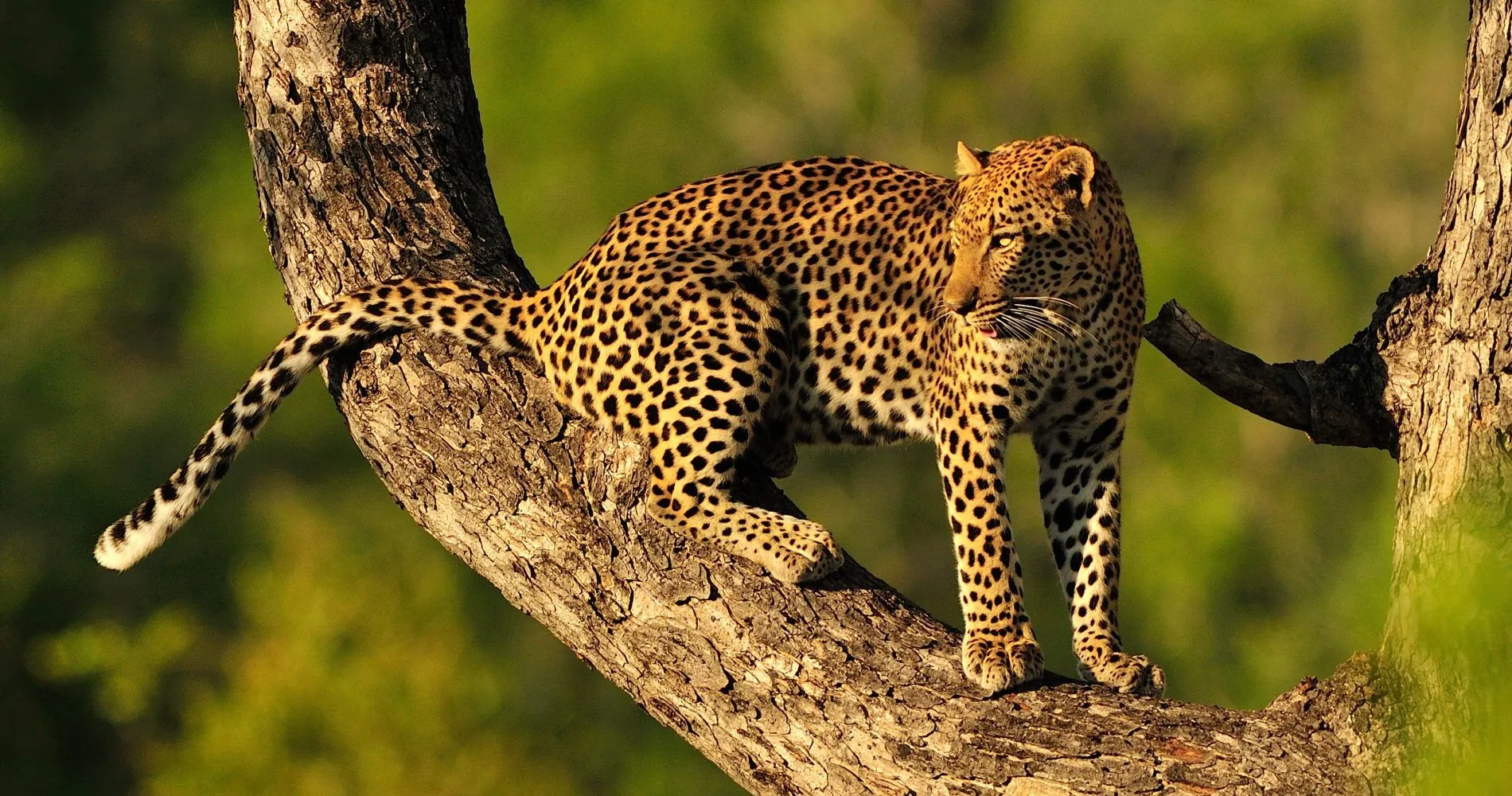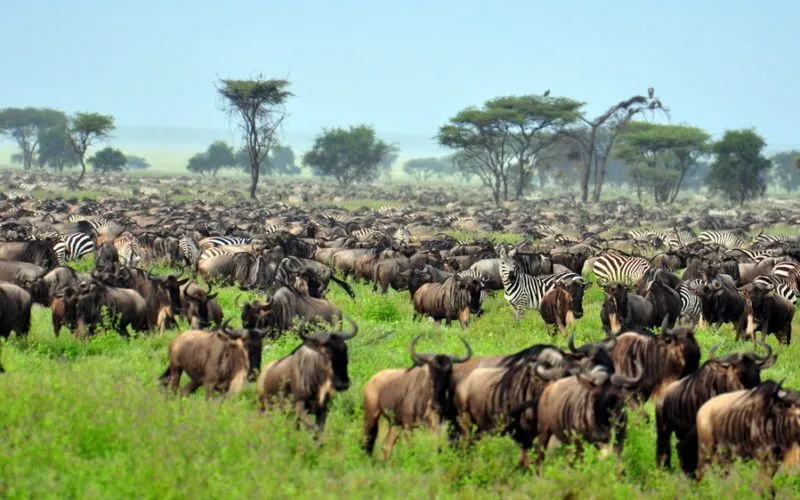Serengeti National Park, situated in northern Tanzania, spans an expansive (5,700 sq mi) and is located in the eastern Mara Region and northeastern Simiyu Region. Encompassing over 1,500,000 hectares (3,700,000 acres) of pristine savanna, this iconic park was established in 1940.
Renowned for hosting the world’s most extensive annual animal migration, the Serengeti witnesses the movement of over 1.5 million blue wildebeest and 250,000 zebra, accompanied by smaller herds of Thomson’s gazelle and eland. Additionally, it boasts the largest lion population in Africa. Unfortunately, the park faces threats such as deforestation, population growth, and ranching.

The Great Migration.
Experience the awe-inspiring spectacle of the annual wildebeest migration in Serengeti National Park, which stands as one of its foremost attractions. Witnessing over a million wildebeest thundering across the Serengeti plains, navigating rivers in their quest for water and fresh grass, is truly a remarkable sight. These mega herds, stretching up to 40 kilometers in length, cover a distance of approximately 1000 kilometers, embarking on a perilous journey where the wildebeest, zebras, and gazelles must outsmart their predators.
The Mara and Grumeti Rivers pose particularly hazardous challenges, with giant crocodiles and swift-flowing waters awaiting the migrating animals. Recognized as one of the Seven Natural Wonders of the World, the Great Migration is a highlight for many visitors, representing one of the planet’s largest wildlife spectacles.
The migration unfolds in a circular pattern between the Serengeti and Masai Mara in Kenya, allowing visitors to witness this extraordinary event throughout the year. The exact timing of the Serengeti wildebeest migration is contingent upon the annual rainfall patterns, ensuring a dynamic and ever-changing natural phenomenon.
